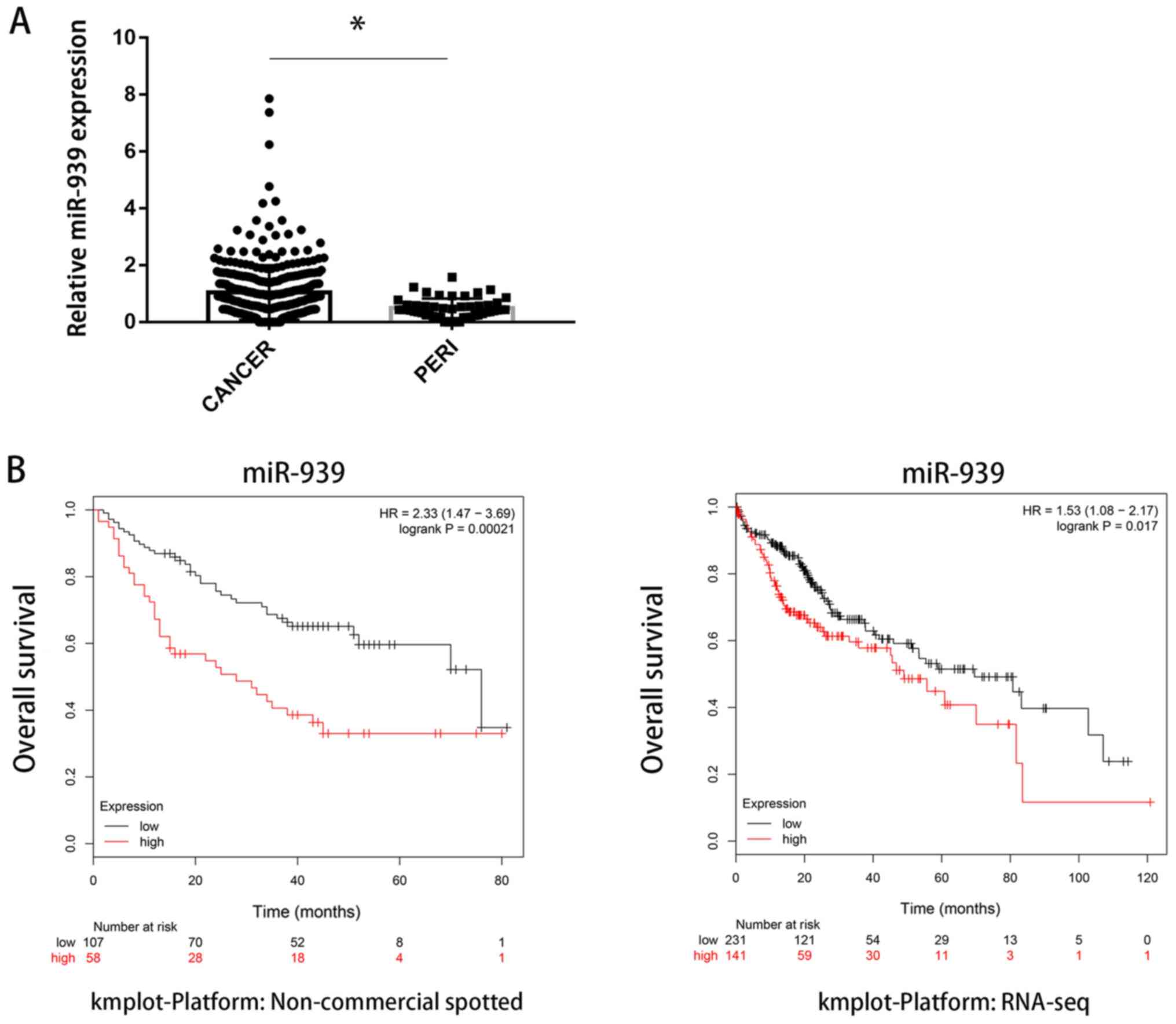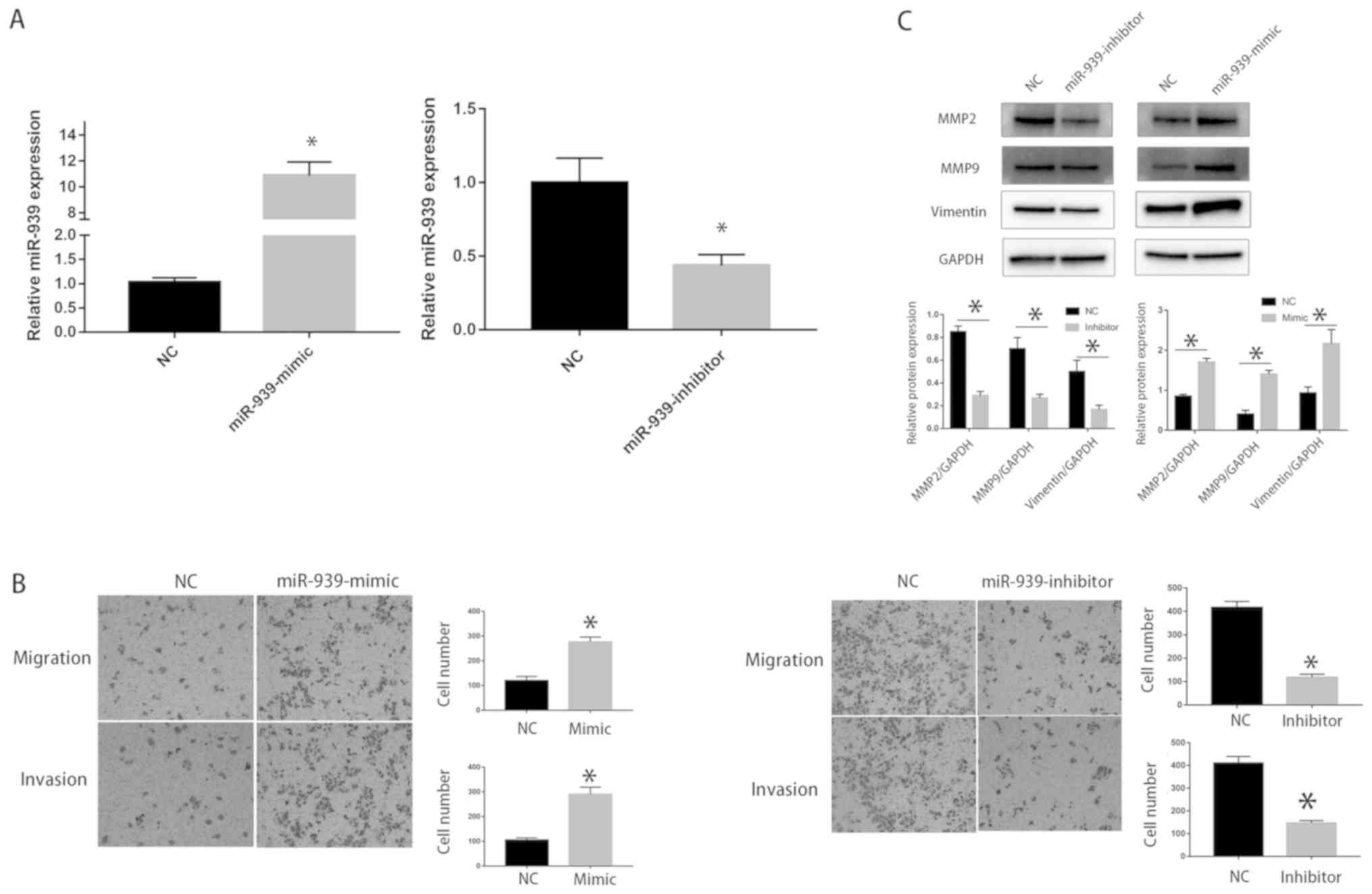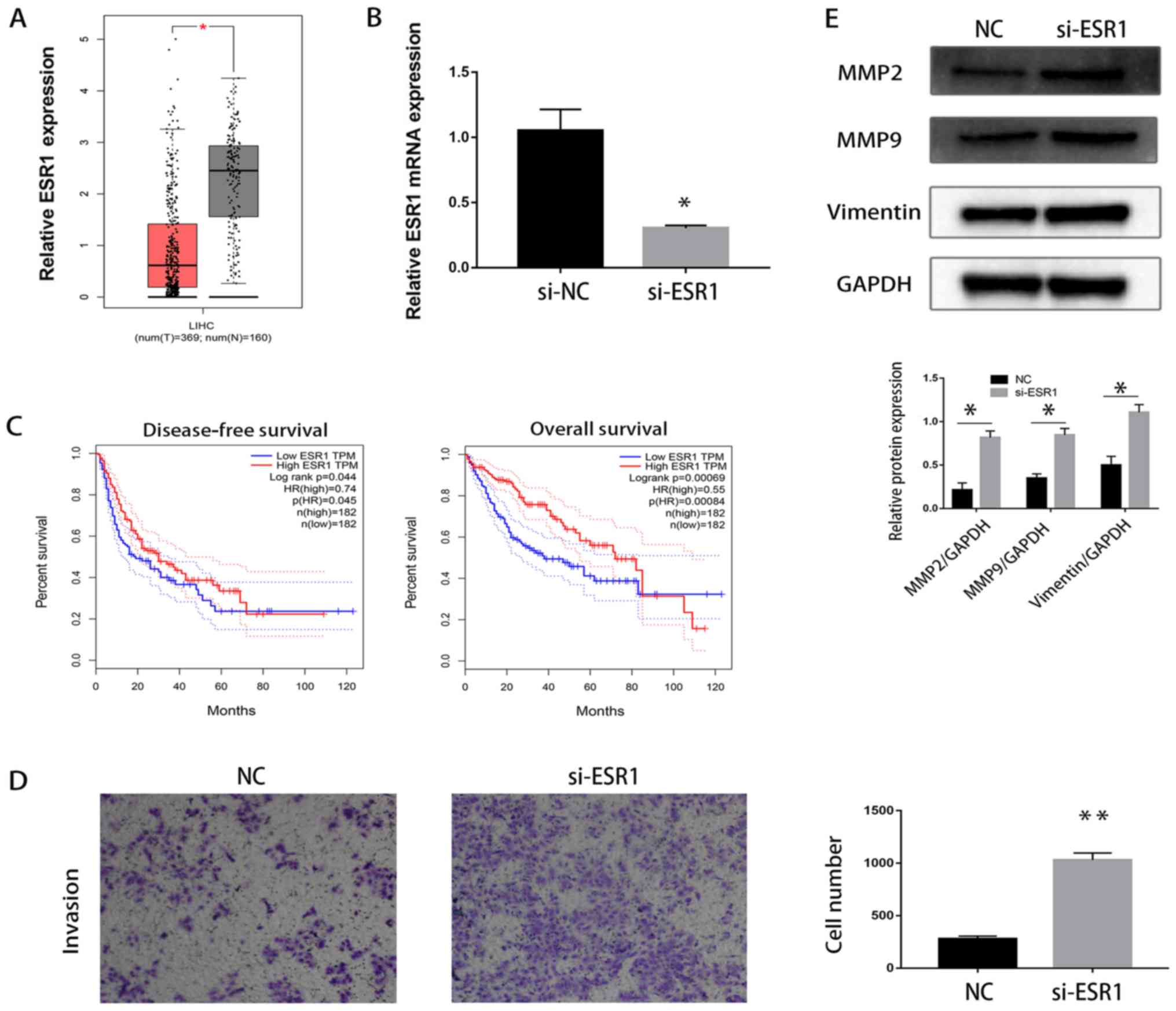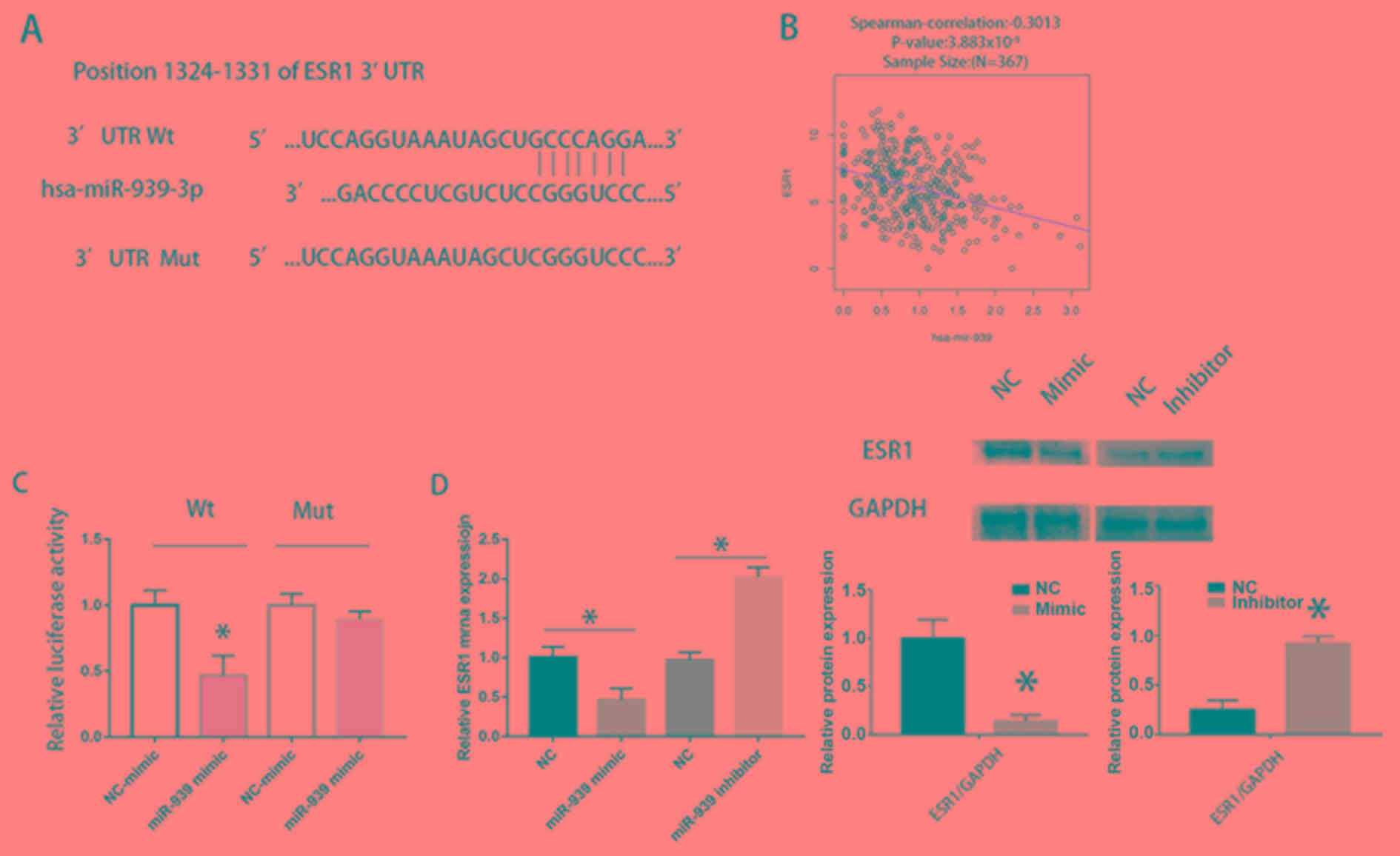|
1
|
Bray F, Ferlay J, Soerjomataram I, Siegel
RL, Torre LA and Jemal A: Global cancer statistics 2018: GLOBOCAN
estimates of incidence and mortality worldwide for 36 cancers in
185 countries. CA Cancer J Clin. 68:394–424. 2018. View Article : Google Scholar : PubMed/NCBI
|
|
2
|
Tan A, Yeh SH, Liu CJ, Cheung C and Chen
PJ: Viral hepatocarcinogenesis: From infection to cancer. Liver
Int. 28:175–188. 2008. View Article : Google Scholar : PubMed/NCBI
|
|
3
|
Ren FH, Yang H, He RQ, Lu JN, Lin XG,
Liang HW, Dang YW, Feng ZB, Chen G and Luo DZ: Analysis of
microarrays of miR-34a and its identification of prospective target
gene signature in hepatocellular carcinoma. BMC Cancer. 18:122018.
View Article : Google Scholar : PubMed/NCBI
|
|
4
|
Brondfield MN, Dodge JL, Hirose R,
Heimbach J, Yao FY and Mehta N: Hepatocellular carcinoma (HCC)
patients listed in short wait regions remain advantaged for liver
transplant (LT) following 2015 HCC policy change. Liver Transpl.
Dec 13–2019.doi: 10.1002/lt.25701 (Epub ahead of print). View Article : Google Scholar : PubMed/NCBI
|
|
5
|
Bakheet AMH, Zhao C, Chen JN, Zhang JY,
Huang JT, Du Y, Gong LP, Bi YH and Shao CK: Improving pathological
early diagnosis and differential biomarker value for hepatocellular
carcinoma via RNAscope technology. Hepatol Int. Dec 12–2019.doi:
10.1007/s12072-019-10006-z (Epub ahead of print). PubMed/NCBI
|
|
6
|
Hu J, Wang E, Liu L, Wang Q, Xia D, Bai W,
Tie J, Li X, Yuan J, Yang S, et al: Sorafenib may enhance
antitumour efficacy in hepatocellular carcinoma patients by
modulating the proportions and functions of natural killer cells.
Invest New Drugs. Dec 13–2019.doi: 10.1007/s10637-019-00885-2 (Epub
ahead of print). View Article : Google Scholar
|
|
7
|
Berezikov E, Guryev V, van de Belt J,
Wienholds E, Plasterk RH and Cuppen E: Phylogenetic shadowing and
computational identification of human microRNA genes. Cell.
120:21–24. 2005. View Article : Google Scholar : PubMed/NCBI
|
|
8
|
Rana TM: Illuminating the silence:
Understanding the structure and function of small RNAs. Nat Rev Mol
Cell Biol. 8:23–36. 2007. View
Article : Google Scholar : PubMed/NCBI
|
|
9
|
Loosen SH, Schueller F, Trautwein C, Roy S
and Roderburg C: Role of circulating microRNAs in liver diseases.
World J Hepatol. 9:586–594. 2017. View Article : Google Scholar : PubMed/NCBI
|
|
10
|
Huang X, Wang L, Liu W and Li F:
MicroRNA-497-5p inhibits proliferation and invasion of non-small
cell lung cancer by regulating FGF2. Oncol Lett. 17:3425–3431.
2019.PubMed/NCBI
|
|
11
|
Ni JS, Zheng H, Huang ZP, Hong YG, Ou YL,
Tao YP, Wang MC, Wang ZG, Yang Y and Zhou WP: MicroRNA-197-3p acts
as a prognostic marker and inhibits cell invasion in hepatocellular
carcinoma. Oncol Lett. 17:2317–2327. 2019.PubMed/NCBI
|
|
12
|
Tang Z, Fang Y and Du R: MicroRNA-107
induces cell cycle arrests by directly targeting cyclin E1 in
ovarian cancer. Biochem Biophys Res Commun. 512:331–337. 2019.
View Article : Google Scholar : PubMed/NCBI
|
|
13
|
Wang J, Chu Y and Xu M, Zhang X, Zhou Y
and Xu M: miR-21 promotes cell migration and invasion of
hepatocellular carcinoma by targeting KLF5. Oncol Lett.
17:2221–2227. 2019.PubMed/NCBI
|
|
14
|
Chen A, Liu S, Lu X, Wei L and Chen Y:
Inhibition of microRNA939 suppresses the development of human
nonsmall cell lung cancer via the upregulation of tissue inhibitor
of metalloproteinases 2. Mol Med Rep. 18:4831–4838. 2018.PubMed/NCBI
|
|
15
|
Bjornstrom L and Sjoberg M: Mechanisms of
estrogen receptor signaling: Convergence of genomic and nongenomic
actions on target genes. Mol Endocrinol. 19:833–842. 2005.
View Article : Google Scholar : PubMed/NCBI
|
|
16
|
Yang J, AlTahan A, Jones DT, Buffa FM,
Bridges E, Interiano RB, Qu C, Vogt N, Li JL, Baban D, et al:
Estrogen receptor-alpha directly regulates the hypoxia-inducible
factor 1 pathway associated with antiestrogen response in breast
cancer. Proc Natl Acad Sci USA. 112:15172–15177. 2015. View Article : Google Scholar : PubMed/NCBI
|
|
17
|
Andruska ND, Zheng X, Yang X, Mao C,
Cherian MM, Mahapatra L, Helferich WG and Shapiro DJ: Estrogen
receptor α inhibitor activates the unfolded protein response,
blocks protein synthesis, and induces tumor regression. Proc Natl
Acad Sci USA. 112:4737–4742. 2015. View Article : Google Scholar : PubMed/NCBI
|
|
18
|
Hishida M, Nomoto S, Inokawa Y, Hayashi M,
Kanda M, Okamura Y, Nishikawa Y, Tanaka C, Kobayashi D, Yamada S,
et al: Estrogen receptor 1 gene as a tumor suppressor gene in
hepatocellular carcinoma detected by triple-combination array
analysis. Int J Oncol. 43:88–94. 2013. View Article : Google Scholar : PubMed/NCBI
|
|
19
|
Tu CC, Kumar VB, Day CH, Kuo WW, Yeh SP,
Chen RJ, Liao CR, Chen HY, Tsai FJ, Wu WJ and Huang CY: Estrogen
receptor alpha (ESR1) over-expression mediated apoptosis in Hep3B
cells by binding with SP1 proteins. J Mol Endocrinol. 51:203–212.
2013. View Article : Google Scholar : PubMed/NCBI
|
|
20
|
Nagy Á, Lánczky A, Menyhárt O and Győrffy
B: Validation of miRNA prognostic power in hepatocellular carcinoma
using expression data of independent datasets. Sci Rep. 8:92272018.
View Article : Google Scholar : PubMed/NCBI
|
|
21
|
Wan J, Liu H, Yang L, Ma L, Liu J and Ming
L: JMJD6 promotes hepatocellular carcinoma carcinogenesis by
targeting CDK4. Int J Cancer. 144:2489–2500. 2019. View Article : Google Scholar : PubMed/NCBI
|
|
22
|
Hu D, Hu Y, Xu W, Yu H, Yang N, Ni S and
Fu R: miR203 inhibits the expression of collagenrelated genes and
the proliferation of hepatic stellate cells through a
SMAD3dependent mechanism. Mol Med Rep. 16:1248–1254. 2017.
View Article : Google Scholar : PubMed/NCBI
|
|
23
|
Wan X, Cheng C, Shao Q, Lin Z, Lu S and
Chen Y: CD24 promotes HCC progression via triggering Notch-related
EMT and modulation of tumor microenvironment. Tumour Biol.
37:6073–6084. 2016. View Article : Google Scholar : PubMed/NCBI
|
|
24
|
Hu Y, Yang C, Yang S, Cheng F, Rao J and
Wang X: miR-665 promotes hepatocellular carcinoma cell migration,
invasion, and proliferation by decreasing Hippo signaling through
targeting PTPRB. Cell Death Dis. 9:9542018. View Article : Google Scholar : PubMed/NCBI
|
|
25
|
Zhang XP, Jiang YB, Zhong CQ, Ma N, Zhang
EB, Zhang F, Li JJ, Deng YZ, Wang K, Xie D and Cheng SQ: PRMT1
promoted HCC growth and metastasis in vitro and in vivo via
activating the STAT3 signalling pathway. Cell Physiol Biochem.
47:1643–1654. 2018. View Article : Google Scholar : PubMed/NCBI
|
|
26
|
Yu H, Shen H, Zhang Y, Zhong F, Liu Y, Qin
L and Yang P: CAV1 promotes HCC cell progression and metastasis
through Wnt/β-catenin pathway. PLoS One. 9:e1064512014. View Article : Google Scholar : PubMed/NCBI
|
|
27
|
Li Y, Chen L, Chan TH, Liu M, Kong KL, Qiu
JL, Li Y, Yuan YF and Guan XY: SPOCK1 is regulated by CHD1L and
blocks apoptosis and promotes HCC cell invasiveness and metastasis
in mice. Gastroenterology. 144:179–191 e174. 2013. View Article : Google Scholar : PubMed/NCBI
|
|
28
|
Feng L, Jing L, Han J, Wang G and Liu Y,
Zhang X, Wang Y, Wang F, Ma H and Liu Y: MicroRNA 486–3p directly
targets BIK and regulates apoptosis and invasion in colorectal
cancer cells. Onco Targets Ther. 11:8791–8801. 2018. View Article : Google Scholar : PubMed/NCBI
|
|
29
|
Liang M, Shi B, Liu J, He L, Yi G, Zhou L,
Yu G and Zhou X: Downregulation of miR203 induces overexpression of
PIK3CA and predicts poor prognosis of gastric cancer patients. Drug
Des Devel Ther. 9:3607–3616. 2015.PubMed/NCBI
|
|
30
|
Wang ZY, Zhu Z, Wang HF, Qin B, Liu J, Yao
XH, Li WC and Chen KS: Downregulation of circDYNC1H1 exhibits
inhibitor effect on cell proliferation and migration in
hepatocellular carcinoma through miR-140-5p. J Cell Physiol.
234:17775–17785. 2019. View Article : Google Scholar : PubMed/NCBI
|
|
31
|
Yu W, Deng W, Zhao Q, Zhuang H, Zhang C
and Jian Z: miR-501 acts as an independent prognostic factor that
promotes the epithelial-mesenchymal transition through targeting
JDP2 in hepatocellular carcinoma. Hum Cell. 32:343–351. 2019.
View Article : Google Scholar : PubMed/NCBI
|


















